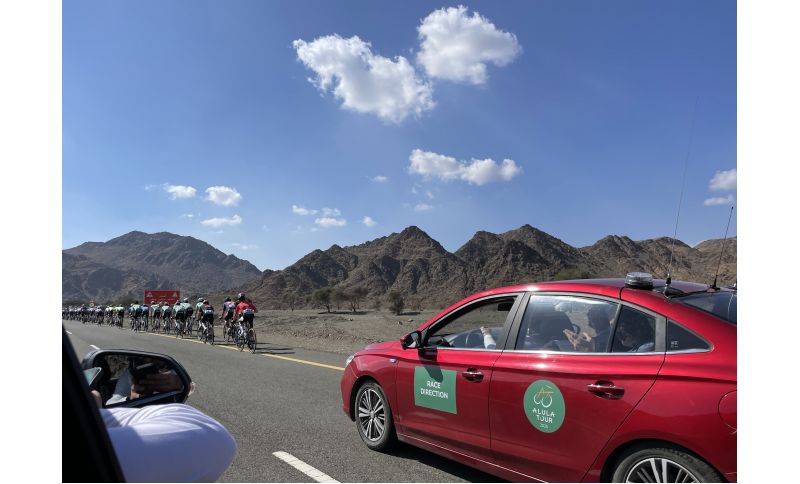

Living a cycling race from the inside, observing up close how the protagonists move and what happens around them, doesn't happen every day. At the AlUla Tour, thanks to the availability and organizational effort of A.S.O. (which has been staging the Saudi race since 2020), we were given this invaluable opportunity in both the first and second stages, which, as we had suspected, immediately turned into an incredibly enriching experience.
Being in the car in the midst of the race allows you to catch details and situations that are missed or not fully grasped on television. Thus, through the exemplary guidance of two former professionals like John Gadret (our driver yesterday) and Cristophe Le Mevel (at the wheel today), in the first two days of the race in Arabia, the athletes' effort took on a much more real dimension in our eyes, glimpsing their puffs, seeing them with open mouths struggling to maintain 50 km/h, or observing their varied grimaces on the climb.
However, fatigue is not the only thing perceived much more vividly from the car. The technical skill and pedaling ease of professionals become much more tangible when following them closely. We confirmed this by seeing some riders rejoin the group after the usual piss stop barely brushing the support cars, others skillfully managing the contents of their musettes, and others testing the elasticity of their bodies by loading up on water bottles, taking on the same appearance as the camels watching them roadside.
Gestures that on television seem almost risk-free because filtered by the screen's distance, when viewed live, therefore, take on an entirely different dimension and give a good idea of the acrobatics performed daily in the group, far from the camera's eye.
Following a race from the car, contrary to what one might think, does not limit the view of what happens in the race but significantly amplifies the number of details and movements that can be caught both with eyes and ears. We're talking about the barriers imposed by motorcycle regulators, the permissions granted by the race direction to photographers to overtake riders and their back-and-forth between the head of the race and the peloton, the dialogues between support cars, the encouragements exchanged by breakaway riders, the actual speed of the athletes, or how rough the asphalt is and how dangerous a particular road section can be.
It was certainly dangerous, for example, the descent that today, in the last lap of the final circuit, was tackled by riders at a controlled pace after the neutralization imposed by the jury - a decision that, having previously observed the road conditions and the speed (at times exceeding 100 km/h) reached by the breakaway, personally did not surprise us so much precisely because we were aware of the road's condition.
In short, the car works as a visual and emotional amplifier, helping you better understand certain dynamics and behaviors, providing new stimuli and an exclusive point of view to ultimately give you a much more complete image of what it means and how complex it is to race a cycling event these days, a sport that, experienced from the inside, undoubtedly becomes even more fascinating.

Se sei giá nostro utente esegui il login altrimenti registrati.